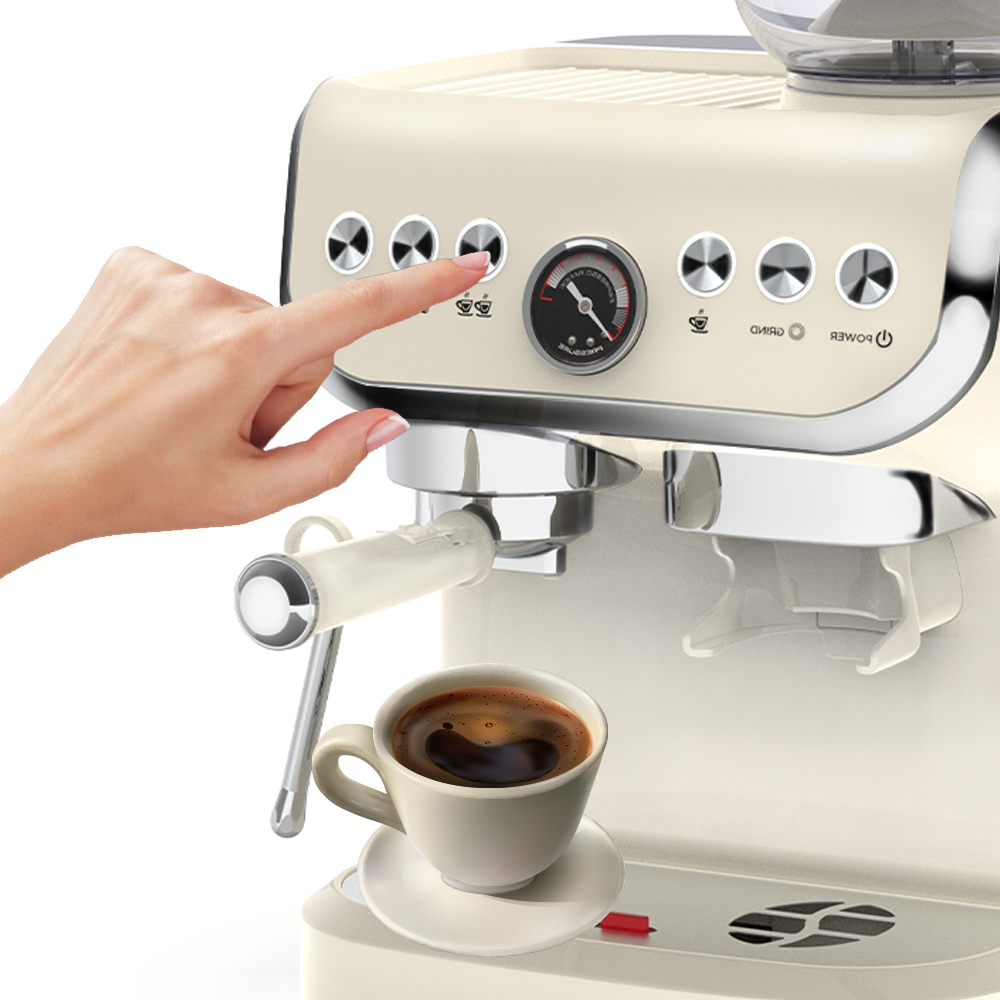As a coffee machine export manager, I often hear from buyers: “Semi-automatic espresso machines are popular, but with so many models out there—how do we pick the right one for our customers?” The answer lies in understanding that semi-autos aren’t one-size-fits-all. These machines bridge the gap between manual lever espresso (for purists) and super-automatics (for convenience), offering control, versatility, and professional-grade results. Whether you’re stocking for home baristas, café owners, or boutique coffee shops, this guide will break down the key factors to help you curate a winning range.

1. Define Your Target Market: Who Will Use This Machine?
The first step is to identify your buyer’ needs. Semi-autos cater to diverse users, from hobbyists to professionals, so aligning the machine to their lifestyle or business model is critical.
- Home Baristas: These are coffee enthusiasts who want café-quality drinks at home but don’t mind the learning curve. They’ll prioritize customization (adjustable grind size, brew pressure, tamping force) and aesthetics (sleek design, premium finishes). Brands like Rancilio Silvia or Breville Bambino Plus are staples here—their compact size and intuitive interfaces appeal to urban homeowners.
- Café & Coffee Shop Owners: For commercial use, durability, speed, and consistency matter most. Look for heavy-duty construction (stainless steel boilers, robust frames) and high output (fast heat-up times, dual boilers for simultaneous brewing and steaming). Models like La Marzocco Linea Mini or Synesso Cyncra are designed for high-volume environments.
- Boutique Brands & Gift Retailers: Here, uniqueness sells. Eco-friendly materials (recycled aluminum, FSC-certified wood accents) or limited-edition designs (collaborations with coffee artists) attract buyers looking for “statement” appliances.
2. Key Features: What Makes a Semi-Auto Stand Out?
Semi-autos are defined by their ability to let users control the brewing process—but not all models deliver the same level of control. Focus on these must-have features:
- Brew Pressure: The heart of espresso. Look for machines with 9-bar pressure (industry standard for extracting rich crema). Some premium models (e.g., Rocket Espresso R58) offer adjustable pressure (8-10 bar) for fine-tuning extraction.
- Steam Wand Performance: A great steam wand is non-negotiable for latte art and milk-based drinks. Prioritize dual-hole or multi-hole wands (even steam distribution) and swivel bases (easy maneuverability). Machines like the Gaggia Classic Pro include a 3-hole wand, making it a favorite among baristas.
- Grind Compatibility: Most semi-autos work with flat or conical burr grinders, but some (like the Sage Dual Boiler) have built-in grinders for “all-in-one” convenience. If your customers prefer separate grinders, ensure the machine’s portafilter basket accommodates standard grind sizes (fine for espresso, medium for drip).
- User Interface: Simplicity vs. precision. Entry-level models (e.g., De’Longhi Magnifica Evo) have preset programs (espresso, lungo) for beginners, while pro models (e.g., Profitec Pro 700) feature digital displays, PID temperature control, and manual override options for experts.
3. Design & Space: Fit the User’s Environment
Where will the machine live? Space constraints and design preferences vary widely:
- Compact Models (Under 20 lbs): Ideal for small kitchens, apartments, or retail counters. Machines like the Breville Bambino (15 lbs) are lightweight, with a foldable drip tray, making them easy to store.
- Mid-Sized Models (20–40 lbs): The sweet spot for home use or small cafés. They balance capacity (1–2 cups per brew) with counter-friendly dimensions. The Rancilio Silvia (35 lbs) is a classic mid-sized option.
- Large Commercial Models (40+ lbs): Built for high-volume settings. These often include dual boilers, larger water tanks (2–3L), and heavy-duty boilers (copper or stainless steel) for continuous use.
4. Quality & Durability: Avoid Costly Returns
Semi-autos are an investment—buyers expect them to last. Here’s how to gauge quality:
- Materials: Stainless steel is ideal for boilers (heat retention, corrosion resistance) and frames (durability). Avoid plastic components in high-stress areas (brew heads, group heads), as they warp over time.
- Construction: Welded seams, reinforced stress points, and sealed bearings (for steam wands) prevent leaks and breakdowns. Test by running 50+ brew cycles and checking for consistent pressure.
- Certifications: Look for CE, UL, or SCA (Specialty Coffee Association) certifications, which validate safety and performance standards.
5. Budget: Align Price with Value
Semi-autos range from $500 entry-level to $5,000+ professional models. Here’s a breakdown:
- Entry-Level ($500–$1,500): Perfect for first-time buyers or budget-conscious home users. Brands like Mr. Coffee or Hamilton Beach offer simple, affordable models with basic features (9-bar pressure, single boiler).
- Mid-Range ($1,500–$3,500): Targets serious enthusiasts and small cafés. Machines like the Breville Dual Boiler or Rocket R58 combine durability with advanced features (PID temperature control, pre-infusion).
- High-End ($3,500+): For professionals or luxury brands. Pro models (La Marzocco Linea, Synesso Hydra) offer precision engineering, modular customization (portafilters, group heads), and lifetime support.
Market Trends to Watch
The semi-auto market is evolving—here’s what to expect in 2024:
- Smart Integration: Wi-Fi/app-controlled models (e.g., De’Longhi Eletta) let users adjust settings, schedule brews, or order beans via their phones.
- Sustainability: Machines with recyclable parts, energy-saving modes, or “green” certifications (Energy Star) are gaining traction.
- Beginner-Friendly Innovations: Features like auto-tamping, pre-infusion presets, and guided workflows (via LED screens) lower the barrier to entry for new users.
Final Thoughts: Match the Machine to the Buyer’s Journey
Choosing the right semi-automatic espresso machine isn’t about picking the “fanciest” model—it’s about understanding your customers’ goals. A home user wants simplicity and style; a café owner needs speed and durability; a boutique brand craves uniqueness. By segmenting your market and highlighting features that solve their pain points, you’ll not only drive sales but also build long-term trust.
At Sheen, we specialize in supplying premium semi-automatic espresso machines tailored to global markets. Whether you need 100 units for a boutique retailer or 1,000+ for a large distributor, our team handles everything from factory sourcing to custom branding—including helping you select the perfect models for your customers.
Ready to explore our catalog or discuss your next order? Visit our [Sheen Blog] for in-depth reviews, buyer checklists, and trends in coffee equipment. Have questions? Drop us an inquiry—we’re here to help you stock the machines that will keep your customers brewing happily!

